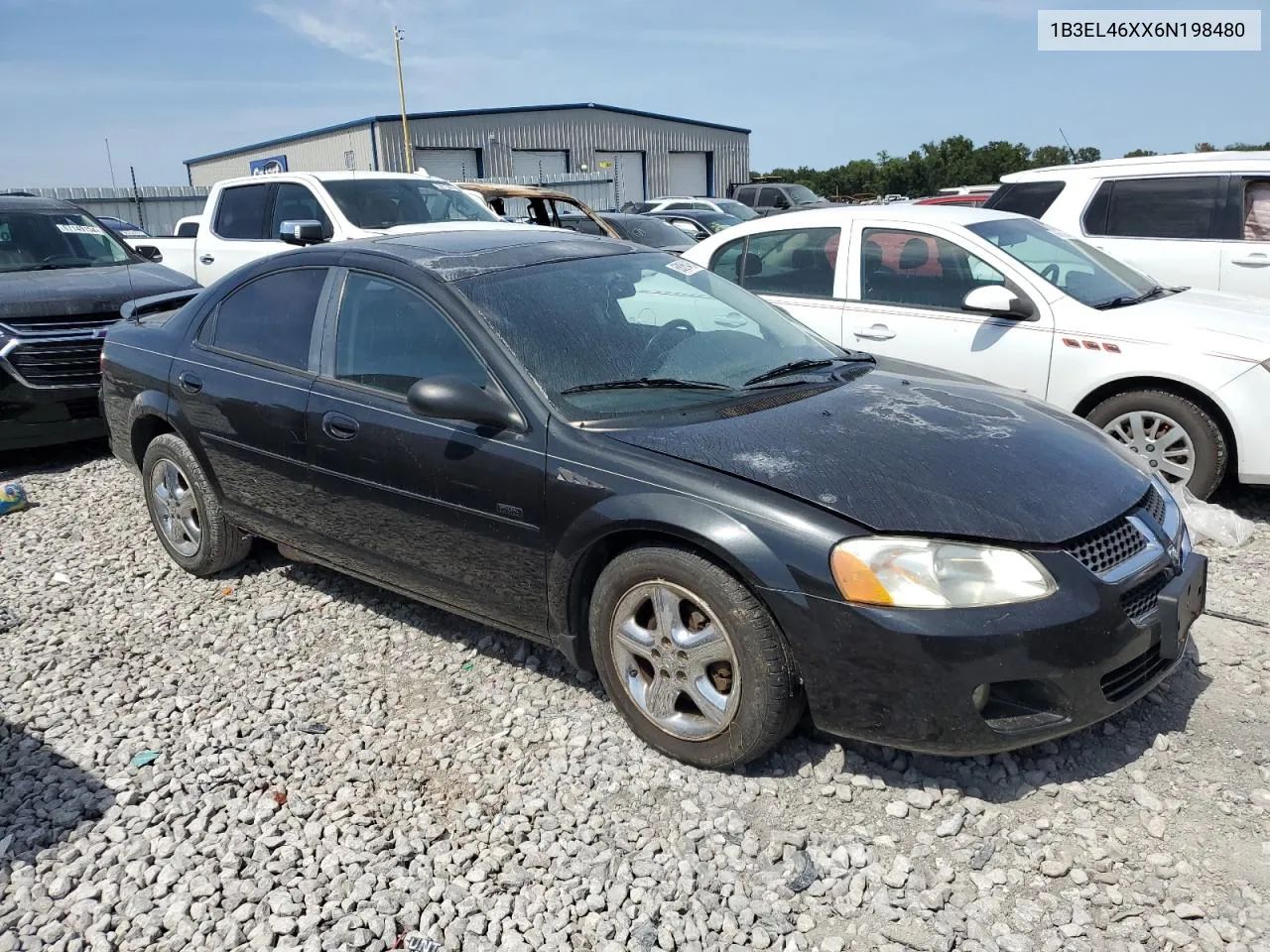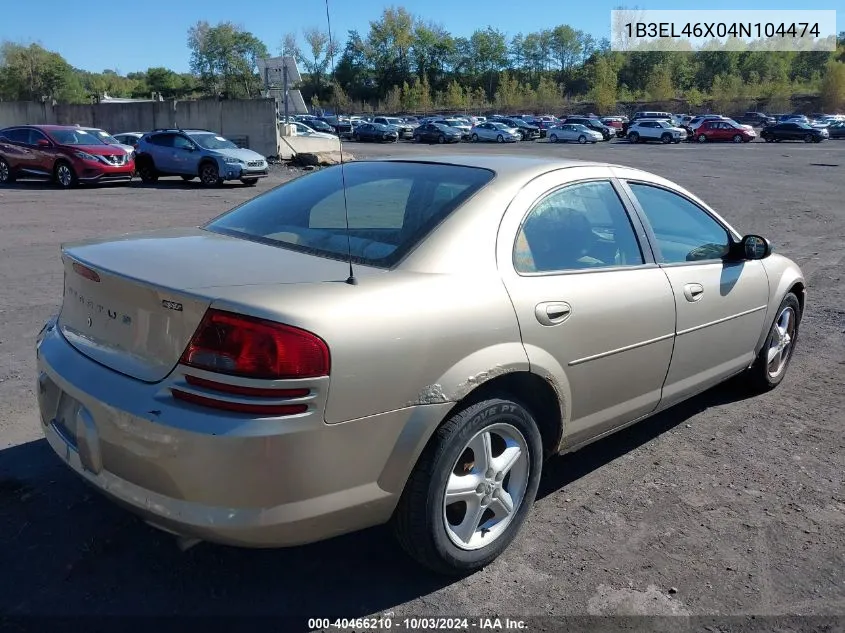Dodge Stratus (105)
2005 Dodge Stratus Sxt
2004 Dodge Stratus R/T
2005 Dodge Stratus Sxt
2002 Dodge Stratus Se
2005 Dodge Stratus Sxt
1996 Dodge Stratus
2002 Dodge Stratus Se
1997 Dodge Stratus
2004 Dodge Stratus Sxt
2006 Dodge Stratus Sxt
2005 Dodge Stratus Sxt
2005 Dodge Stratus Sxt
2004 Dodge Stratus Sxt
2001 Dodge Stratus Se
2006 Dodge Stratus Sxt
2003 Dodge Stratus Se
Dodge Stratus is a symbol of the American automobile industry of the late 20th century, which attracted attention not only for its design, but also for its technical characteristics. This sedan was introduced by Chrysler in 1995 and immediately gained popularity due to its elegant appearance and comfort.
From its debut until it ceased production in 2006, the Dodge Stratus went through several significant changes and modifications. The car was available in various body styles - from sedan to coupe, which allowed consumers to choose the best option depending on personal preferences.
During its production period, the Dodge Stratus was available in a variety of color schemes, from classic dark shades to bright and eye-catching colors. This added individuality to each piece and strengthened the model’s position on the market.
Dodge Stratus: history and evolution of the model
The first generation Dodge Stratus was introduced in 1995 as a replacement for the Dodge Spirit. It offered various body styles, including a sedan and coupe. The car was equipped with various engines and transmissions, which allowed buyers to choose the optimal characteristics for their needs.
Modifications and features
- Body Options: The Dodge Stratus was available as a sedan and coupe, offering a choice of two body styles depending on buyer preference.
- Engines and transmissions: Depending on the modification, the car was equipped with various engines, including four-cylinder and six-cylinder options, as well as various types of gearboxes.
- Color Options: Buyers could choose between a variety of exterior colors, allowing them to personalize the appearance of their vehicle.
The Dodge Stratus gained popularity due to its reliability and comfort, but in subsequent years it faced competition in its class. In 2006, production of the model was discontinued due to changes in Dodge brand strategy.
The main stages of development and the concept of the Dodge Stratus
Dodge Stratus is a model that was first introduced in 1995 by the American automaker Dodge, owned by Chrysler Corporation. The car was developed as a mid-size sedan to replace the Dodge Spirit and became part of the Chrysler JA platform. Since its introduction, the Stratus has attracted attention for its modern design and technological innovations that characterized the late 1990s.
Throughout its life, the model went through several significant stages, including design changes, mechanical improvements and adaptations to different markets. The basic concept of the Dodge Stratus combined the comfort of a family car with the performance of a sports sedan, making it an attractive choice for a wide range of consumers.
- 1995-2000: Introduction to the Dodge lineup as a replacement for the outdated Spirit model. The Stratus was available in several trim levels and body styles, which contributed to its popularity in the North American market.
- 2001-2006: Restyling and technical improvements to increase competitiveness. During this period, the Dodge Stratus was also introduced to the European and Asian markets, adapting to local requirements.
- Problems: In a number of cases, owners have encountered problems with the electrical system and suspension design, which have reduced satisfaction. Overall, however, the Stratus remained a reliable and popular car in its segment.
Dodge Stratus modifications
The Dodge Stratus was produced in several versions, each of which offered its own unique features and characteristics.
Major modifications included:
- Dodge Stratus SE : Base model, offered reliability and economy. Equipped with a 2.0 or 2.4 liter engine, ideal for everyday use.
- Dodge Stratus SXT : Sports modification with improved dynamics and appearance. An option for those who value style and performance.
- Dodge Stratus R/T : High-performance version with a beefed-up engine and sport suspension. Intended for enthusiasts who prefer dynamic driving.
Each modification of the Dodge Stratus had its own characteristics, reflecting the needs of different consumer groups. The choice between the economy of the base model and the dynamics of the sports versions made the car accessible to a wide range of buyers.
Variety of versions and features of each model
The Dodge Stratus, produced by Chrysler from 1995 to 2006, was a symbol of a comfortable and fairly reliable sedan and coupe on the North American market. During its existence, the car has undergone several significant changes and modifications, which affected its appearance, technical characteristics and overall concept.
The main versions of the Dodge Stratus included base sedan and coupe models, as well as sportier and sleeker R/T variants. Since its introduction, the Stratus has become popular due to its solid reliability and relative affordability, which has attracted the attention of a wide range of buyers.
- 1995-2000: In the early years of production, the Dodge Stratus featured a classic design with a moderate emphasis on sporty lines. Available colors included traditional sedan and coupe tints.
- 2001-2006: In subsequent years, the model underwent a significant redesign, which affected the appearance of the car; the SUV acquired a more modern and aggressive style, as well as improved technical characteristics.
Dodge Stratus Colors and Design
At one time, the Dodge Stratus offered a variety of color options that reflected fashion trends and preferences of car enthusiasts in the early 2000s. Each model was available in several basic exterior shades, which ranged from classic to bolder and brighter options.
The Stratus design concept combined elements of modern style and practicality. These were cars with a recognizable body shape, smooth lines and a characteristic profile, emphasizing their sporty and elegant appearance.
Main body colors of Dodge Stratus:
- Silver : One of the most popular choices, emphasizing restraint and modern style.
- Black : A classic and elegant choice that gave the car a formal and business-like appearance.
- Red : Bright and energetic, this color made the Stratus stand out on the road.
- Blue : A calm and cool shade that gives the car sophistication and status.
- White : The purity and simplicity of white accentuated the lines and shape of the Stratus.
These color schemes, combined with the distinctive design, made the Dodge Stratus not only a functional vehicle, but also a stylistic highlight of the Dodge lineup at the time.
Popular exterior and interior colors at different stages of production
Changes in exterior and interior color preferences of the Dodge Stratus reflect fashion trends and changes in consumer tastes throughout its history.
At different stages of production of the Dodge Stratus, various exterior and interior colors were popular, reflecting customer tastes and fashion trends. Here are some of the most popular colors:
- 1995-2000: Traditional exterior colors such as white, black and silver were popular in the early 2000s. Interiors often featured neutral shades such as gray and beige.
- 2001-2006: In the late 1990s and early 2000s, the color palette expanded to brighter, more saturated hues. Red, blue and green body colors have become popular. Interiors were often complemented with rich colors such as navy blue and burgundy.
- 2007 and Later: In the final years of production of the Dodge Stratus, consumers preferred more versatile and classic exterior colors such as silver, black and white. The interiors also featured classic neutral tones, reflecting trends in the automotive industry towards the end of the 2000s.
So, the exterior and interior colors of the Dodge Stratus changed in accordance with fashion trends and customer preferences at different stages of its production. These changes reflect the evolution in automotive design and consumer tastes over the course of its history.

















































































































































